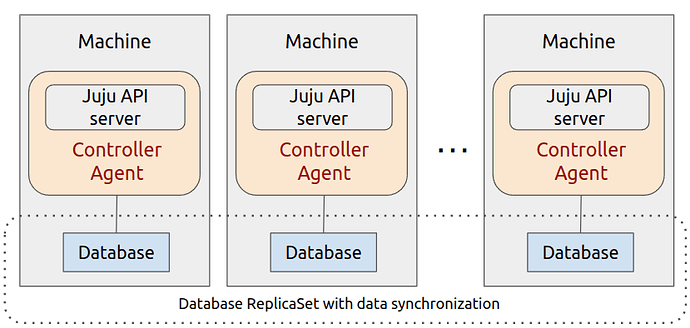See also:
In the context of a cloud deployment in general, high availability (HA) is the concept of making software resilient to failures by means of running multiple replicas with shared and synchronised software context – something usually achieved through coordinated scaling (horizontally and up). In Juju, it is supported for controllers on machine clouds and for regular applications on both machine and Kubernetes clouds
Controller high availability (machine clouds). Juju controllers can be made highly-available by enabling more than one machine to each run a separate controller unit with a separate controller agent instance, where each machine effectively becomes an instance of the controller. This set of Juju agents collectively use a database replicaset to achieve data synchronisation amongst them.
